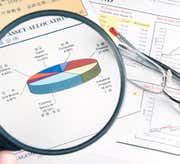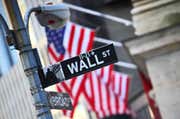There are more than a dozen electronic exchanges fighting for their share of trading in the $26 trillion U.S. stock market, but the New York Stock Exchange (NYSE) and Nasdaq are the most widely known – and widely traded.
NYSE
The NYSE is one of the largest stock exchanges by trading volume. Its roots trace back to 1792 when 24 stockbrokers famously met beneath a buttonwood tree in lower Manhattan to sign the Buttonwood Agreement to trade securities on commission. Nearly 100 years later – in 1886 – NYSE reach a major milestone: one million shares traded in a single day. Today, more than one billion shares trade on a typical day, with much of the trading focused on large and medium-sized companies, including the blue chips. (For related reading, see The History of Stock Exchanges.)
The push toward electronic trading helped prompt NYSE’s 2005 acquisition of rival market the Archipelago Exchange – a fully electronic exchange that listed new and fast-growing companies. Following the purchase, the Archipelago Exchange was renamed NYSE Arca – a name it continues to operate under today. Not long after that deal, the NYSE bought the American Stock Exchange, initially renaming it to NYSE MKT and, most recently, NYSE American. In contrast to the NYSE, NYSE American focuses on trading in small-cap stocks.
Today, all three national stock exchanges – NYSE, NYSE Arca and NYSE American – are owned by the Intercontinental Exchange (ICE), a global markets operator that also owns several other futures and options exchanges. While most trading is done electronically these days, floor traders are still used to set pricing and deal in high-volume institutional trading.
Nasdaq
Nasdaq – short for National Association of Securities Dealers Automated Quotations – emerged on the scene in 1971 to become the NYSE’s first major competitor. Today, it’s the largest U.S. electronic stock market: With about 3,200 companies, it lists more companies and, on average, trades more shares each day than any other U.S. market. While Nasdaq lists many of the tech giants like Microsoft (MSFT), Cisco (CSCO) and Intel (INTC), it’s home to companies from all areas of business, including retail, communications, financial services, transportation, media and biotechnology.
In the late 2000s, Nasdaq acquired the Boston Stock Exchange and the Philadelphia Stock Exchange – one of the nation’s oldest exchanges, which predated the NYSE by two years. Today, Nasdaq operates 25 markets including one clearing house and five central depositories that offer trading and market services across multiple asset classes.
Other Exchanges
While the NYSE and Nasdaq were the only exchanges in the U.S. for years, today there are more than a dozen, including those that operate under the umbrellas of the Intercontinental Exchange and Nasdaq, plus Bats Global Markets, the National Stock Exchange, the Chicago Stock Exchange and The Investors Exchange (IEX) – the exchange made famous by Michael Lewis’s 2014 book “Flash Boys.” Across all exchanges, the vast majority of trading is now done electronically. Because exchanges continue to consolidate – and new ones form – you can expect the list of exchanges to evolve in the coming years. (For related reading, see NYSE Trading Speed Bump to Counter Flash Boys.)
Electronic Trading: The Role of a Designated Market Maker
-
 Insights
InsightsThe NYSE and Nasdaq: How They Work
Learn some of the important differences in the way the NYSE and Nasdaq exchanges operate and the securities that trade on them. -
 Investing
InvestingWhy Do Companies Choose NASDAQ for Their IPO?
The NYSE is known for its prestige, so why do some companies opt to list on the NASDAQ instead? -
 Insights
InsightsThe Birth of Stock Exchanges
Learn about the evolution of stock exchanges, from the Venetian states to the British coffeehouses, and finally to the NYSE. -
 Investing
InvestingStock Exchanges: A Global Tour
Check out the history and inner workings of the world's six most well-known stock exchanges. -
 Investing
InvestingHow Nasdaq Continues To Innovate
For centuries, a stock market was a physical arena where buyers and sellers traded shares. Then the NASDAQ opened and changed everything. -
 Investing
InvestingNYSE Trading Speed Bump to Counter Flash Boys
NYSE implements "speed bump" for trading in effort to stymie HFT and win new business. -
 Investing
InvestingNYSE Trading Glitch Could Pinch ETF Investors
A trading glitch on NYSE Arca affected hundreds of ETFs at a time of increased competition for ETF listings among U.S. exchanges. -
 Insights
InsightsNasdaq Goes to Bat for Company Founders
Jeff Thomas, Nasdaq's head of West Coast operations, outlines why the exchange is making a case for startups. -
 Trading
TradingThe Death Of The Trading Floor
Electronic trading has almost completely replaced face-to-face human trading.



